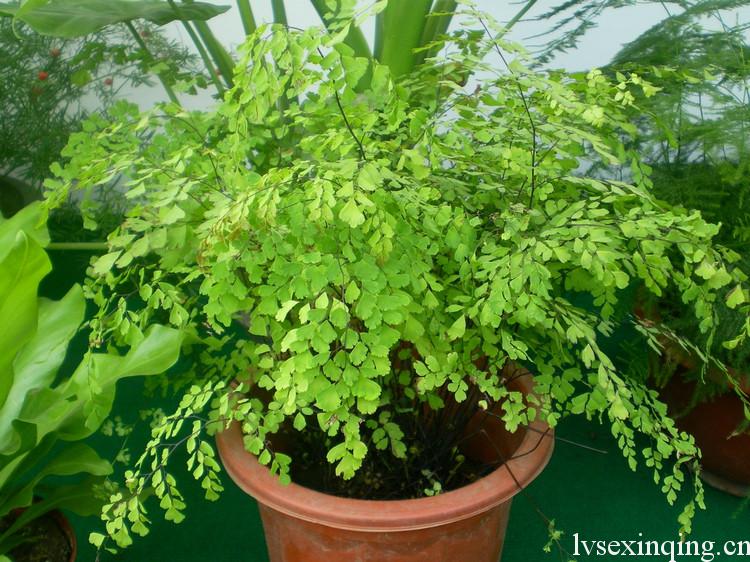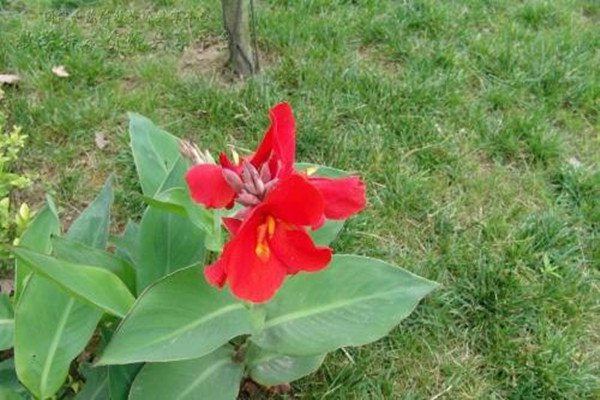How to raise Dryopteris Dryopteris, the culture methods and matters needing attention
How to raise Dryopteris, environment: the environment suitable for Dryopteris should be dark and humid, this plant can not stand cold and drought, and prefer to live in acidic soil, but it can also be placed in a place with sunlight scattering for a short time.
Dryopteris habits, like fertile, permeable calcareous sandy loam, family pot can be made from a mixture of loam, rotten leaf soil and river sand. Dryopteris is native to the flowing stream or dripping rock wall at an altitude of 100,2800 meters above sea level, and is an indicator of calcareous soil. The suitable growth temperature of Dryopteris Dryopteris is 2125 ℃ in daytime and 1215 ℃ at night. As long as the temperature is above 5 ℃, the leaves will remain fresh green, but the leaves below 5 ℃ will be frostbitten. Dryopteris likes to scatter light and is afraid of direct sunlight. It should be placed in a brightly lit place indoors so that it can grow normally even if it is placed for 1 year.

How to cultivate Dryopteris Dryopteris in hydroponics (basic method)
Environment: the environment suitable for the survival of Dryopteris should be dark and humid, this plant can not stand cold and drought, and prefer to live in acidic soil, but it can also be placed in a place with sunlight scattering for a short time. This will make it grow better.
Soil: in terms of soil, the best combination is the semi-mixed culture soil of mountain forest soil and pastoral soil.
Watering: Dryopteris likes high humidity very much, so it should be watered 4-5 times a day in spring, summer and autumn, but it can be reduced to 1-2 times in winter, but it still needs frequent spraying to prevent the leaves from being too dry. Watering must be adequate during the growing season.
Fertilization: fertilization is necessary for Dryopteris. On average, thin fertilizer needs to be applied every 2 weeks or so in order to promote its growth. However, to grasp the principle of "giving more with a small amount", you can use 1000-2000 times dilute solution such as flower clover.
Temperature: generally speaking, when the leaf is more than 5 ℃, the leaf will not be scorched yellow, but it should not exceed 30 ℃. During hydroponic culture, the water temperature should be controlled in addition to the temperature in the room, which should be equal to the room temperature.
Lighting: be sure to shade and avoid direct sunlight. The stronger the light, the better. Toilet and indoor display can not be more than 3 days, and then move to the windowsill for 3 days, pay attention to spray water, can ensure that the plant grows well.
Humidity: the climate in summer is often too muggy, and the room is not well ventilated. At this time, we should improve the indoor air humidity and pay attention to strengthening ventilation.
Pruning: when the foliage is too dense, the old leaves can be properly trimmed with scissors, otherwise, the leaves will easily turn yellow, thus hindering viewing.
Water culture of Dryopteris przewalskii
First of all, wash the roots of Dryopteris cultivated in soil and disinfect them with potassium permanganate. Then find a container to add water, match it with a proper proportion of nutrient solution (which can be bought on the market) or fix it on the mouth of the container or on the surface of the water. The fern should be planted on the coral stone and put the coral stone directly in the water, which will grow well after survival.
Dryopteris hydroponics precautions: coral stone can be bought in a rockery shop in the flower-and-bird market. There are many styles that you can choose. The coral stone should be desalted by soaking before use. In order to let the stone grow moss, can not be kept indoors for a long time, properly accept the sun. When hydroponic culture, the water should not drown the head of Dryopteris. Water is replenished in time during maintenance, and the water can be changed at 5: 10.
Matters needing attention in culturing Dryopteris:
1. Dryopteris prefers warm, humid and semi-cool environments and hates direct sunlight, so it is best to put the plant indoors where the sun is out of reach. After all, too much light can easily cause scorching on the edge of the leaves.
2. Ferns grow in a humid environment, and Dryopteris Dryopteris is no exception. During cultivation, in addition to keeping the soil moist, water mist is often sprayed on the leaves to improve the humidity in the air. When the plant is yellowing, it is often caused by insufficient humidity. Of course, this may also be caused by frost injury.
3. The pot needs to be changed once every spring, and the dried leaves and old roots should be trimmed at the same time. The basin soil should also be replaced with fresh, fertile and loose rotten leaf soil, and it is best to add a small amount of brick dust inside.
Maintenance of Dryopteris przewalskii in four seasons
Maintenance of Dryopteris in spring
Dryopteris can be changed every April. Dryopteris likes a damp environment and is afraid of strong light. It can be illuminated sooner or later in early spring and placed in a room with bright scattered light. Spring is the growing period of Dryopteris, pay attention to water and fertilizer management. Especially in indoor maintenance, attention should be paid to increasing indoor air humidity, which is the key to family breeding of Dryopteris Dryopteris. In addition, ferrous sulfate solution can be irrigated once a month to increase the acidity of the soil, which is not only conducive to growth, but also make its leaves green.
Maintenance of Dryopteris in summer
Dryopteris grows normally in summer, but the high temperature, hot and dry environment is not conducive to the growth of Dryopteris. Should put the iron line fern in the bright light indoor maintenance, keep the basin soil moist, water each time in the morning and evening, often spray around, improve the air humidity. Do not water and fertilize when the weather is too hot. Fertilization is usually carried out in the evening and watered the next morning after fertilization. This is more conducive to the play of fertilizer effect. The iron fern is afraid of the wind and should not be placed in front of the electric fan and the air outlet of the air conditioner. The air humidity of the air conditioned room is lower, so the number of sprays should be increased.
Autumn maintenance of Dryopteris przewalskii
Dryopteris grows normally in autumn, so pay attention to the management of water and fertilizer. After the temperature drops at the end of autumn, we should pay attention to maintain the indoor temperature, gradually reduce the amount of water, make the basin soil moist, and gradually move it to a place with morning and evening light for cultivation. Don't fertilize when the temperature drops.
Maintenance of Dryopteris in winter
Dryopteris is not resistant to cold and should be kept above 5 ℃ at room temperature. The growth of Dryopteris less than 5 ℃ is stagnant and the leaves are dark green, which can appropriately increase the light intensity and time in the morning and evening (avoid noon light), reduce watering, keep the basin soil dry and do not apply fertilizer.
If the indoor temperature is on the high side in winter, the air humidity will be lower, pay attention to replenish the air humidity.
Time: 2019-04-21 Click:
- Prev

Culture methods and matters needing attention of purple leaf canna
When you hear this name, you can't help thinking about the bananas we eat and wonder if it tastes better and how it tastes. If so, you are very wrong. It is not a banana at all, and it is very different. It is a very beautiful flower.
- Next

How to raise cyclamen? how to raise cyclamen?
Cyclamen culture method, fertilization: cyclamen is a fertilizer-loving plant, 2 ‰ potassium dihydrogen phosphate is applied once a year in spring and autumn, nitrogen fertilizer should not be applied during flowering, otherwise it will cause branches and leaves to grow and shorten the life of flowers. First understand the habits of cyclamen. Cyclamen likes a growing environment with plenty of light, cool and moist.
Related
- Fuxing push coffee new agricultural production and marketing class: lack of small-scale processing plants
- Jujube rice field leisure farm deep ploughing Yilan for five years to create a space for organic food and play
- Nongyu Farm-A trial of organic papaya for brave women with advanced technology
- Four points for attention in the prevention and control of diseases and insect pests of edible fungi
- How to add nutrient solution to Edible Fungi
- Is there any good way to control edible fungus mites?
- Open Inoculation Technology of Edible Fungi
- Is there any clever way to use fertilizer for edible fungus in winter?
- What agents are used to kill the pathogens of edible fungi in the mushroom shed?
- Rapid drying of Edible Fungi

